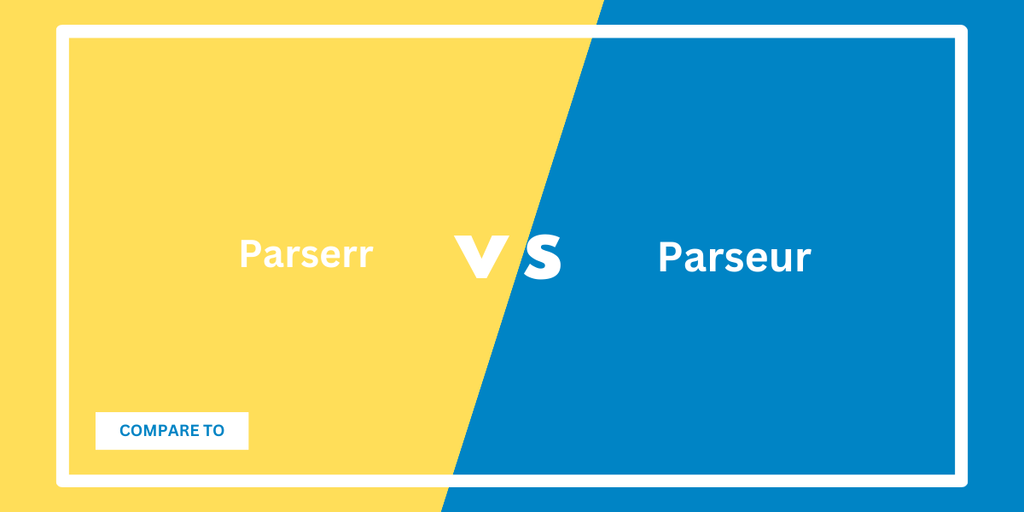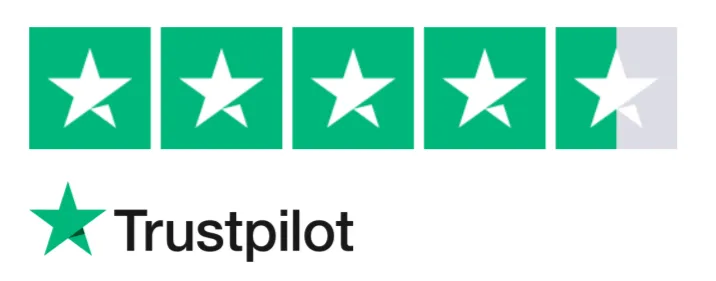The Best Mailparser Alternative in 2026
Extracting data from emails and attachments shouldn’t require hours of rule-building or constant maintenance. As businesses scale, automation needs to scale with them. If you’re exploring better options than Mailparser, especially one that’s faster, more accurate, and easier to manage, you’re in the right place.
Key Takeaways:
- Mailparser relies heavily on manual templates and rules, which can limit scalability.
- Parseur combines AI-powered extraction with intuitive visual tools to reduce setup time and ongoing maintenance.
- This guide will help you choose the best email parsing solution for your business needs in 2026.
Many teams start with Mailparser and eventually encounter familiar challenges: rigid, rule-based configurations, difficulty managing multiple document formats, and layouts breaking when senders make small changes. That’s where Parseur shines. Our AI-driven approach adapts to your documents, not the other way around, which gives you fast, reliable, and future-proof email parsing.
In this article, we’ll break down the similarities and differences between Mailparser and Parseur so you can confidently choose the best parsing tool for your workflows in 2026 and beyond.
Parseur vs Mailparser in a nutshell
The table below summarizes the differences between Mailparser and Parseur. Read on for a detailed comparison.
 Mailparser |
 Parseur |
|
|---|---|---|
| Engine | Rule-based | AI-based |
| Email display | Text only | Full email render |
| Parsing reliability | Great | Great |
| PDF parsing | Basic | Advanced, with AI OCR |
| Attachment parsing | Yes, some | Yes, many |
| Number of mailboxes/models | 20 to unlimited | Unlimited |
| Web page parsing | No | Yes |
| Metadata parsing | Yes, some | Yes, many |
| Table parsing | Yes, via rules | Yes, automatic |
| Automatic parsing | Yes, some | Yes, with AI + hundreds of templates supported |
| Zonal OCR | No | Yes |
| Dynamic OCR | No | Yes |
| AI OCR | No | Yes |
| Multi-layout support | Yes, via routing | Yes, automatic |
| Spreadsheet merging | Yes, via rules | Yes, automatic |
| Post processing | Yes | Yes |
| Integrations | Download Webhook Zapier Google Sheets Power Automate Make |
Download Webhook Zapier Google Sheets Power Automate Make |
| API | No | Yes |
| Retention Policy | Up to 60 days | Up to 1 year |
| Notifications | Email and Webhooks | |
| Logs | Yes, some | Yes, detailed |
| GDPR Compliance | Yes, data hosted in the US | Yes, data hosted in the EU |
What is an email parser?
Emails come in all shapes and layouts, and that's a problem when you want to feed data coming from an email to another app or system because machines like data properly structured to process it. And email is not designed for structured data.
An email parser converts emails into structured data. If you want to dive deeper into email parsers, check out our What is an email parser? article.
What are Mailparser.io main features?
Mailparser remains a capable email parsing solution, especially for users comfortable with rule-based automation. It offers powerful features such as attachment parsing, metadata extraction, table parsing, data formatting, and multiple export methods, including webhooks and integrations. These tools allow you to build detailed extraction workflows tailored to highly structured email formats.
Setting up your mailbox in Mailparser is quite straightforward.
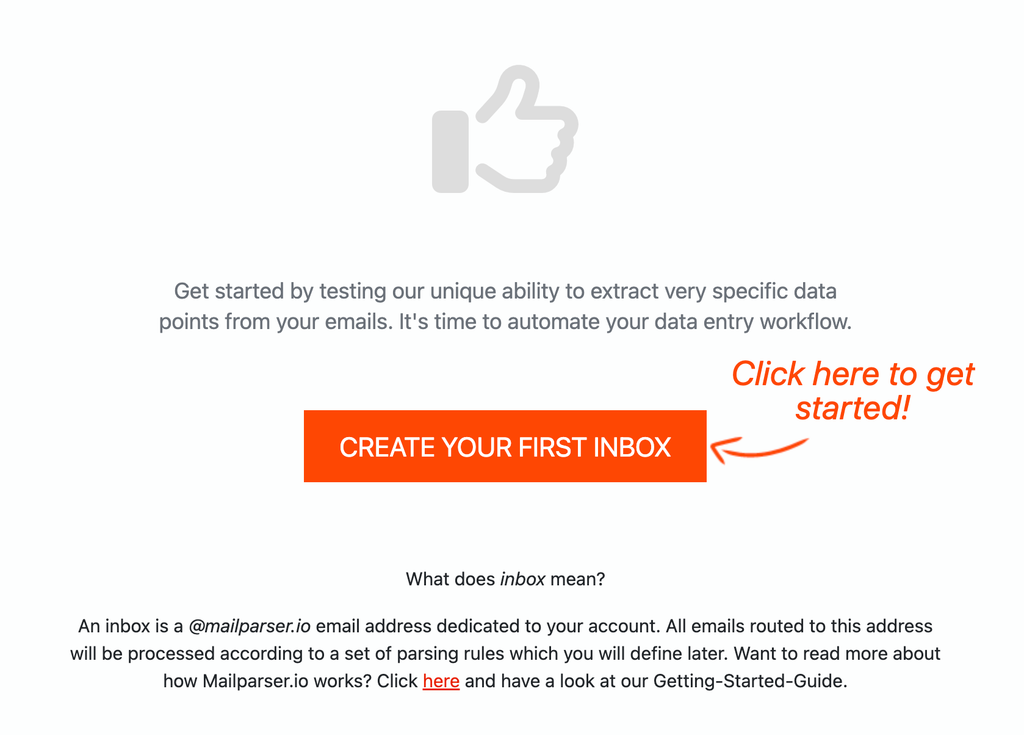
What's great about Mailparser is that once all your rules are set up, you can count on it to reliably parse your data as long as the email layout remains the same. If the layout changes, you'll need to adjust your rules accordingly.
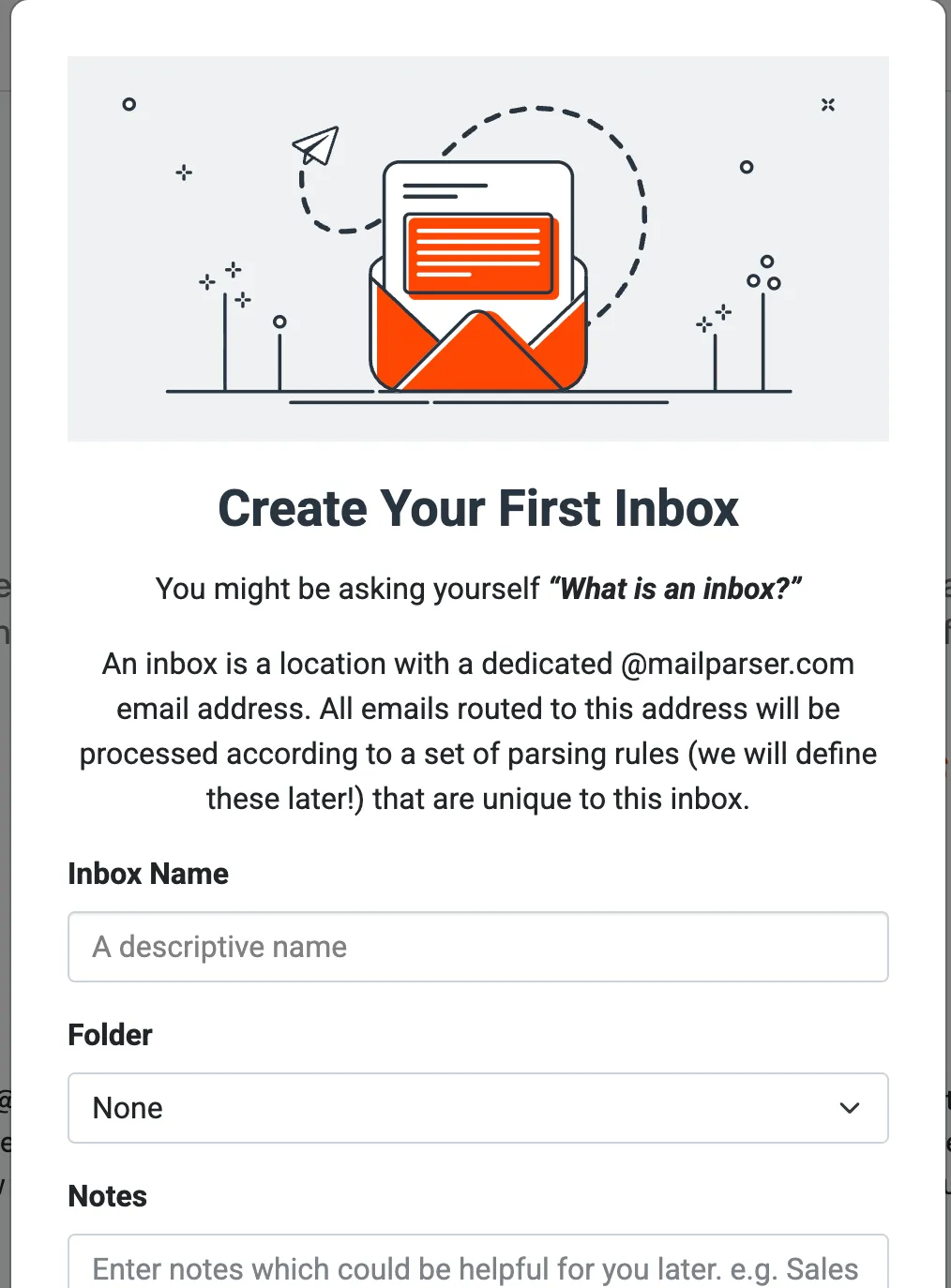
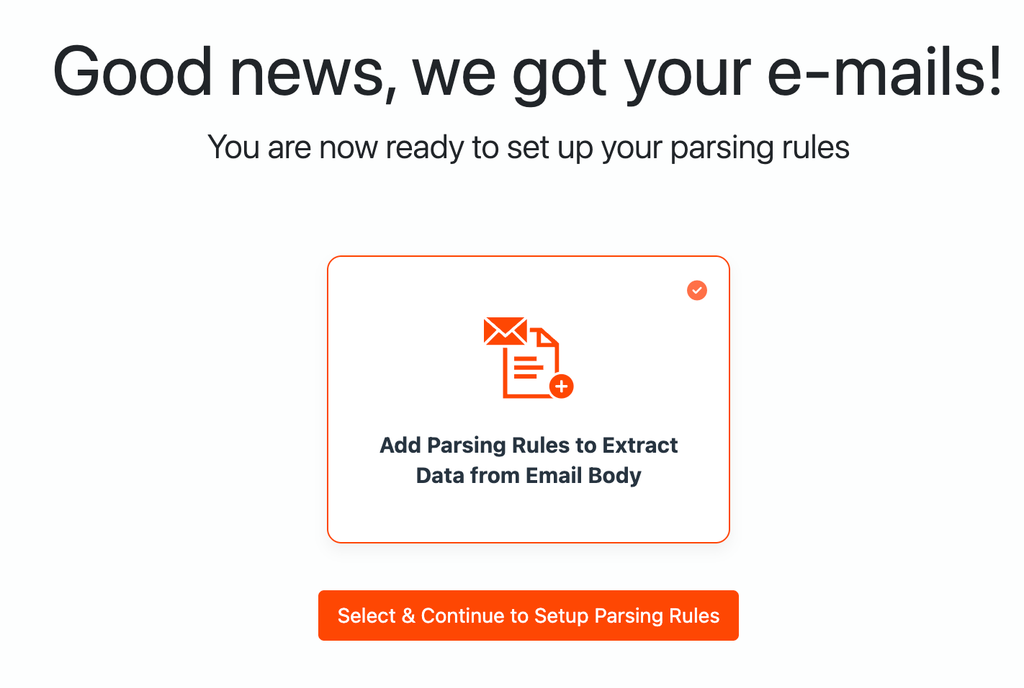
Because of the rule-based approach, each mailbox you create in Mailparser is limited to a single layout type. If you receive emails from different providers and want to send them to a single endpoint, you'll have to create one mailbox per provider and then set up routing rules to tell which mailbox to use for each email.
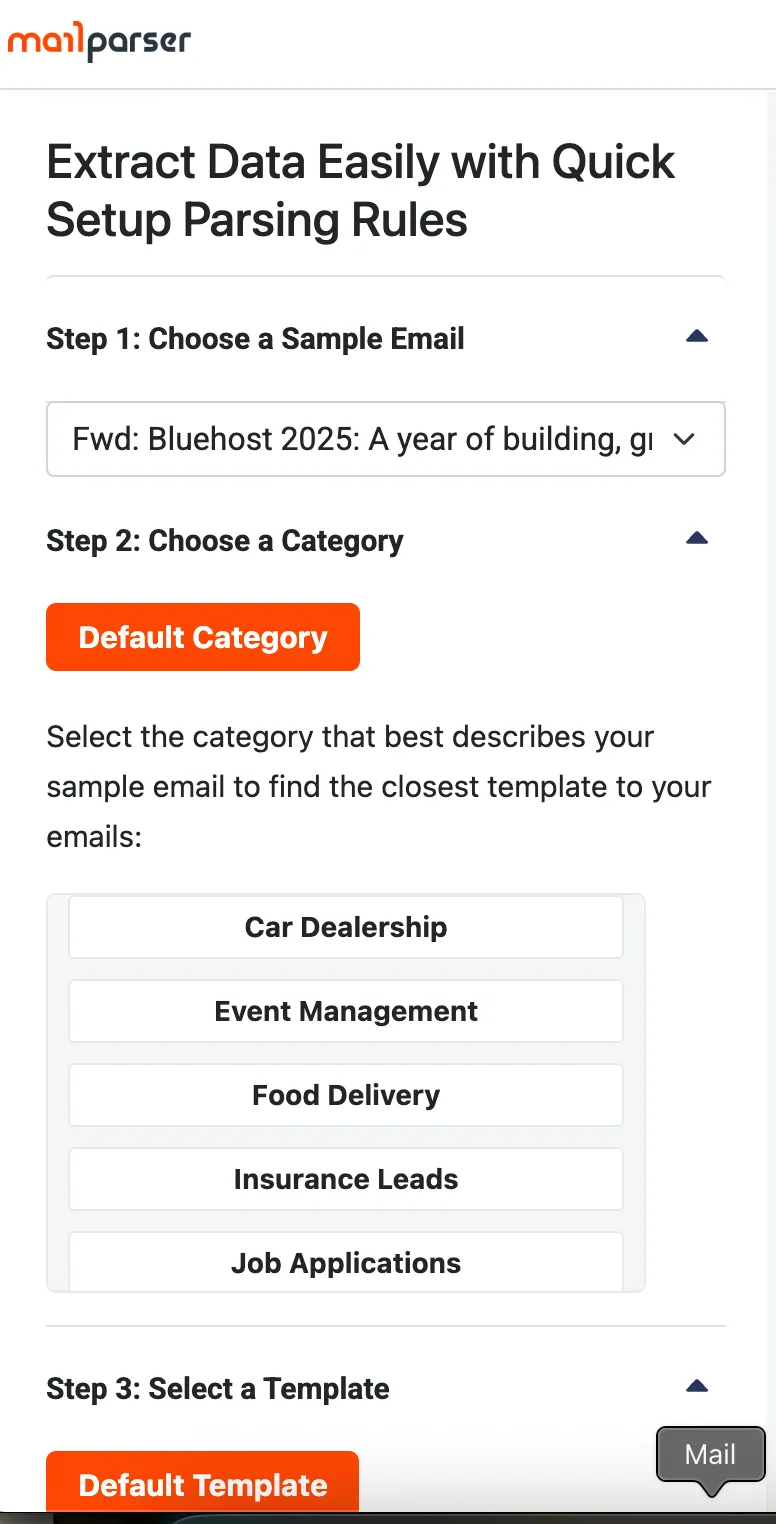
Of course, you'll have to make sure you name your fields consistently and set up your exports similarly if you ultimately want your data to be sent to the same endpoint.
In short, Mailparser performs well when parsing consistent layouts and when users have the expertise to create rules. But for growing operations handling many email formats, or when you don’t have dedicated technical resources, ongoing maintenance can become challenging. In those cases, a more flexible, automated alternative such as Parseur may offer a better long-term fit.
In comparison with other tools such as Mailparser.io, I can safely say Parseur is cleaner, more intuitive, and developer-friendly.
- Shyam B., Novac Technology
Mailparser Pricing
Mailparser uses a volume-based subscription model, where pricing depends on the number of emails (or “credits”) you need to process each month. As of 2025, plans start at US $29.95/month for the Starter tier (250 credits, suitable for low-volume use or testing). Moving up the scale, there is a Professional plan at US $39.95/month (500 credits), a Business plan at US $99.95/month (2,000 credits), and a Premium plan at US $299.95/month (10,000 credits and unlimited inboxes). For very high-volume workflows, Mailparser also offers a customizable Enterprise tier with personalized pricing.
All plans include unlimited parsing rules, downloads, and support for integrations via webhooks and automation platforms. However, because Mailparser relies on rule-based parsing, each mailbox typically supports only a single layout. If you need to support multiple email formats or document types, you’ll likely need multiple mailboxes, which means you'll need to move to a higher-tier plan. For businesses handling varied layouts or growing document volumes, this can quickly become expensive and complex to manage.
Parseur: A Mailparser alternative in 2026
Parseur is an email parsing solution that aims to keep a simple point & click approach. Like Mailparser, Parseur's extensive feature-set makes it a great choice for the most advanced use cases. Unlike Mailparser, setting up Parseur is easy even without a technical background, as everything is point & click.
Parseur also supports multiple email layouts in a single mailbox automatically with no additional setup. Let's have a look at Parseur's major features.
Parseur With Its Smart Automation
Parseur leverages advanced AI and machine learning to transform how data is extracted from emails, documents, and PDFs. This AI-driven integration makes Parseur more flexible, accurate, and future-proof compared to traditional rule-based parsers. Here’s how:
- Automatic layout detection — Parseur’s AI analyzes each incoming document or email and automatically understands its structure. Whether it’s a standard invoice, a complex report, or a free-form email, the AI adapts and extracts relevant fields without manual rules.
- Smart field recognition — Instead of rigid templates, Parseur’s AI recognizes data points like names, dates, addresses, amounts, and more, even when layouts change. That reduces the need for continual adjustments and makes parsing much more reliable over time.
- Seamless handling of varied document types — From scanned PDFs and images to HTML emails and attachments, Parseur’s AI-powered OCR and parsing engine can process them all. This versatility ensures your workflows stay smooth even when document formats are unpredictable.
- Adaptive learning with minimal setup — Just highlight a few sample fields once, and Parseur’s AI learns to apply the same logic across similar documents. No coding, rule-writing, or technical setup required, making it ideal for teams without developers.
- Flexible automation across workflows — With API and integration support (Zapier, Power Automate, Make, n8n, webhooks), you can embed Parseur’s AI directly into business workflows, automating data flow into CRMs, ERPs, spreadsheets, or custom apps, all instantly and without manual intervention.
- Consistent accuracy even with layout changes — Because the AI recognizes elements contextually (not just by position), Parseur handles layout variations gracefully. Whether an invoice format changes slightly, the extraction logic remains robust and reliable.
Automatic multi-layout parsing
If you don't control the source of the email you parse, you can be sure the email will change after some time. When that happens, you want to be able to quickly support the new email layout while still keeping the old one for backward compatibility. Additionally, you may want to consolidate your parsed data from different platforms.
With Parseur, when a new type of email comes in, you just need to create a new template for it. You don't need to create any routing rules; Parseur will reliably and automatically know which template to use for every email.
Beyond emails: document and attachment parsing
Sometimes the data you want to extract is not included in an email but in a PDF, a spreadsheet or an email attachment. Parseur can extract data from the most common attachments, including PDF, spreadsheets and MS Word. The mail parser has a robust OCR engine which uses both Zonal OCR and Dynamic OCR.
Parseur also supports automatic parsing and consolidation of data in CSV or Excel files.
Rich HTML email parsing
Parseur is the only email parsing tool that displays emails as they appear in your favorite email client, with formatting, colors, pictures, tables, etc. Because of that unique feature, Parseur is better able to understand the data you want to extract from the email. That also means it is more convenient to create templates, as you see the same email layout you're used to.
Outstanding parsing reliability
Parser aims at ensuring the parsed data is the data you asked for. It will not extract data that is completely different from your original template, preventing your processing pipeline from becoming corrupted. Parseur's parsing engine is very reliable and will provide you with consistent parsed data every time.
Metadata parsing
On top of extracting data from email content, Parseur can also extract metadata such as the From, To, CC, and BCC fields, as well as the email subject, date, and time. Parseur can also automatically extract the last reply from an email conversation, which makes it a great tool to sync emails with a ticketing tool, for example.
Point and click table parsing
Extracting tabular data from emails is a very common use case. For example, you can often have a different number of items on an invoice or different results from Google Alerts. You could create templates for each combination of results, but that soon proves time-consuming. Instead, Parseur lets you extract tables and repetitive data with a simple point & click, even for the most complex tabular layouts. Read more about parsing tabular data in emails with Parseur.
Multiple data export and integrations for every use case
With Parseur, you can directly download your parsed data as CSV, Excel or JSON. Or you can send webhooks to your application in real time.
Parseur also integrates with Zapier using an instant integration (data is sent in real-time after an email is parsed). Zapier is the leader in application connector services, allowing your parsed data to be sent to thousands of applications and CRMs, such as Salesforce, Zoho, Slack, AirTable, SmartSheet, and many more.
Parseur also integrates with:
Parseur Pricing
Parseur’s pricing is based on the number of pages processed each month, with emails, PDFs, and attachments counting as pages. Credits renew monthly, making it easy to scale and pay only for what you use.
Note: 1 credit = 1 email
The Free plan includes up to 20 pages per month, AI-powered parsing, unlimited mailboxes and fields, and GDPR-compliant storage. The Base tier supports up to 3,000 pages with advanced AI, post-processing, and standard support. The Scale tier supports up to 1,000,000 pages, includes unlimited mailboxes, API access, and multi-user accounts. For larger enterprise needs, the Custom plan offers unlimited users, priority support, and fully tailored terms.
All plans include AI-powered extraction and parsing of emails, PDFs (including scanned PDFs), and attachments, as well as integrations with Zapier, Make, Power Automate, and Webhooks. Higher-tier plans add advanced post-processing and formatting capabilities to clean and transform extracted data automatically.
Other Parseur highlights
Post-Processing and data formatting: Parseur allows you to convert parsed data into various formats, including date, time, number, or text. Read more about formatting parsed data.
Re-run document parsing: You can re-run a document to parse it with a single click. You can also request to re-run parsing on your entire mailbox with a single click.
Send documents via API: You don't need to forward documents by email. You can submit them directly via the API.
Manage account mailboxes and templates via API: Automate your mailbox management using Parseur API.
Logs for control and audit: Review logs detailing what happened at each step of the parsing.
Notifications when something goes wrong: get notifications by email or via webhook when an email cannot be parsed.
Privacy conscious and GDPR compliant: Parseur takes your privacy seriously and is GDPR compliant. Your data is hosted in a highly secure and redundant facility in the European Union.
Chat Support: You don't have to wait days to get an answer to a simple question. Talk to the support team using the chatbox.
Web page parsing via URL: Parseur can download and parse a webpage from a URL in a document.
Why Choose Parseur Over Mailparser in 2026
If you have a simple use cases and low volume emails, then Mailparser is the right tool for you. Parseur shines for complex jobs and high volume volumes.
For teams that need email parsing that scales effortlessly, Parseur offers a smarter, faster, and more reliable solution than traditional rule-based tools like Mailparser. With AI-driven parsing, automatic multi-layout detection, and seamless handling of attachments and PDFs, Parseur eliminates the need for complicated rules, manual maintenance, or multiple mailboxes.
As businesses grow, document formats change, and new workflows emerge, automation must evolve with you. Parseur’s adaptive AI engine learns from your documents and continues to perform even as layouts shift or volumes increase. Instead of rebuilding rules, troubleshooting broken parsers, or juggling multiple mailboxes, you can confidently automate once and let Parseur handle the rest.
Its intuitive interface, combined with powerful integrations and GDPR-compliant security, makes it the go-to tool for businesses that want to automate workflows efficiently while reducing errors and manual effort. Whether you’re dealing with invoices, orders, support emails, or lead notifications, Parseur ensures your data flows accurately and consistently into the apps and systems you rely on.
Frequently Asked Questions
Here are some common questions about using Parseur as a Mailparser alternative.
-
What makes Parseur better than Mailparser in 2026?
-
Parseur uses AI to automatically detect layouts, extract data, and adapt to changes without requiring manual rules. This makes it faster, more accurate, and easier to maintain compared to Mailparser’s rule-based approach.
-
Can Parseur handle multiple email layouts in the same mailbox?
-
Yes! Parseur automatically identifies and applies the correct parsing logic for different email formats, eliminating the need for separate mailboxes or routing rules.
-
Does Parseur integrate with my existing tools?
-
Yes! Parseur integrates with Zapier, Make, and Power Automate and supports Google Sheets. It can also send data via Webhooks or its API to any system of your choice.
Last updated on



